When Gerry Cannon invited me to co-author his forthcoming book, “The Giza Plateau Secrets and a Second Sphinx Revealed”, I’m sure that neither of us could have foreseen the most explosive revelation in our subsequent hunt for answers from our discoveries.
An Unexplored Mound
Gerry already leaned towards a time frame for the building of the three large pyramids as well as the Sphinx as being many thousands of years older than many of us have been led to believe. He also discovered an unexplored mound on the Giza plateau where another sphinx is likely buried.
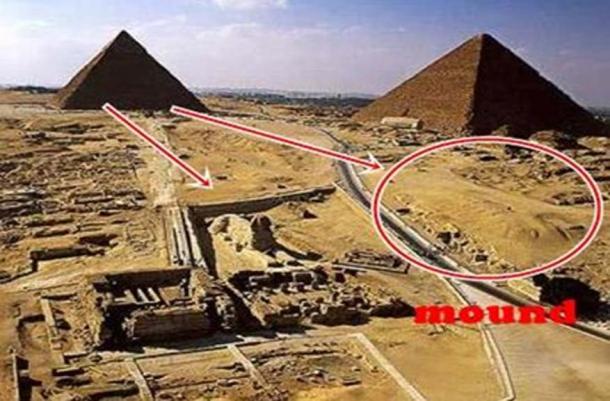
Giza Plateau with proposed buried second sphinx mound encircled. ( Travel Around the World )
The Dream Stela which is placed between the fore-legs of the Sphinx has two lions at its top.
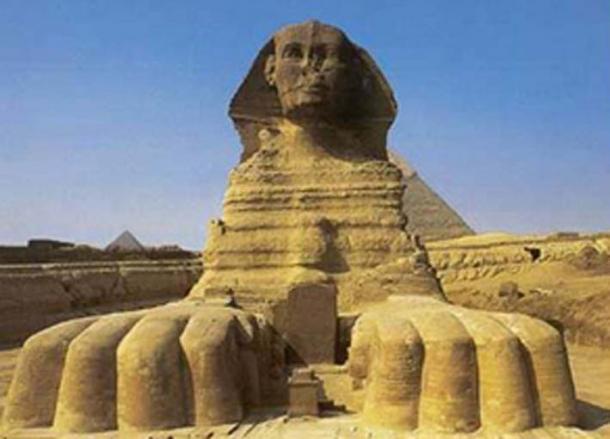
Dream Stele between the Sphinx paws. ( Free Verse Challenge )
Apparently, no one except Gerry had noticed that the right-hand sphinx clearly has female features and the left male features. There are many other examples of ancient Egyptian art that depicts two male and female sphinxes.

Detail of the Dream Stele sphinxes. (Author provided)
This is particularly strange because the lions in the Dream Stela lie back to back just as they do in the hieroglyphs representing Aker and KHephre, the lions of Yesterday and Today, and these are generally considered to be both male. Egyptians believed that after sunset the sun travelled through a tunnel inside the Earth and dawn came when the sun rose in the morning after emerging from the other end of the tunnel. Aker, as the two lions, guarded both portals of the tunnels. Therefore, they often had the double lion statue at the doors of palaces and tombs to guard them from evil spirits, just like Chinese Foo dogs guarding temples and palaces. Perhaps the Lions on the Dream Stela were guarding the entrance in the Sphinx which led down to the vast underground complex of temples and tunnels. We only have to look at the hieroglyph for the Akerw to understand the lions on the Dream Stele.
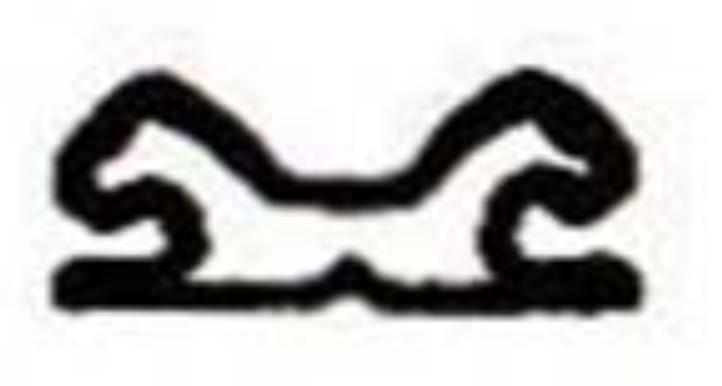
Hieroglyph for the Akerw by Sir Wallis Budge in his “Egyptian Language. Easy lessons in Egyptian Hieroglyphs with Sign List”, published 1910.
When was the Sphinx Carved?
For centuries, people have guessed at there being a female Sphinx – and there are sketches going back to the 16th century which show such a monument. The reason for it may have nothing to do with the Dream Stela lions, but to place the Lion headed goddess Sekhmet into the Giza Mount frame. Gerry also noticed other ancient Egyptian art that depicted male and female sphinxes.
In the ancient Egyptian belief system, there were ‘Two Lions of the Mount’. The meaning behind them is explained in our new book. It might be that Gerry has found the Second Sphinx. Its situation and the problems Gerry has faced in trying to remove a ‘Sandy head covering Burqa’ are fully described in Part Two.
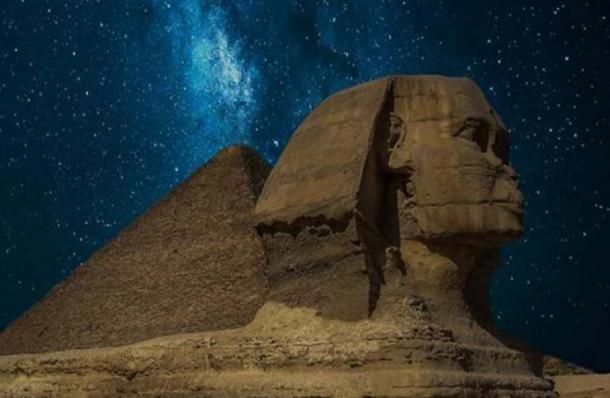
The Great Sphinx of Giza. ( Public Domain )
I agreed that the Sphinx had to have been carved out of natural rock far back in the past, for the massive erosion marks and lines around the body could only have been worn away when either there were many years of tropical downpours, or when the sea washed heavy waves over the Giza Plateau. Another reason for the erosion on the sphinx compared with little or none on the pyramids is because the sphinx is located about 60 meters (196.85 ft.) lower than the pyramids – where water would have stayed longer when the plateau was submerged.

Giza complex elevation. ( irshadsiahi)
Gerry’s point is that whoever carved the sphinx would have had to have seen the huge bedrock in order to calculate the size to carve it. Therefore, there couldn’t have been any sand covering that mound! It was most likely exposed at the time when the Giza plateau’s climate was fertile, or perhaps even tropical. That being the case, it would have been thousands of years before the ancient Egyptians were there. Perhaps it was before the onset of the last great ice age or the so-called Great Flood, which might have occurred when the ice melted. Such a time was at least 12,500 years ago. Even so, mainstream Egyptologists have gone to great lengths to try and discredit such a time frame .
Why are Egyptian archaeologists and Egyptologists so adamant in their beliefs that they cannot keep an open mind and admit that they could be wrong? Perhaps it’s because any evidence proving the ancient Egyptians had not built the three main pyramids on the Giza plateau or carved the sphinx would surely change the course of their history and also discredit their writings about those monuments. It is all well and good to live and let live; to respect the fact that others have such strong beliefs that they find it hard to accept the truth – but when they falsify names and deface monuments (such as altering the face of the Sphinx) just to make them fit with those beliefs, it is going beyond acceptable actions.
What is Really Depicted in the ‘Khufu’ Cartouche
I had seen pictures before of the Cartouche supposedly found in the Great Pyramid by Howard Vyse in 1837 and never questioned it other than to suspect that it had been placed there by workers doing restoration work during the time of the 4th Dynasty Pharaoh, who according to that one and only cartouche was called ‘Khufu’. It was only when I decided to take a look at the Kings Lists for ‘Khufu’ and the Pharaohs credited with building the other two large Giza Pyramids that I spotted a very serious anomaly. Virtually all the kings of Egypt had a God name, which like a ‘Christian’ name became part of their full name and throughout all of Dynastic Egypt the one overall God was ‘RA’, who was thought of as the Sun. This god name even lingers on today in names like ‘Rachel’, ‘Rebecca’ and ‘Ralph’, as does another Egyptian God Name ‘Iah’ or ‘Yah’ which we find in ‘James’ (at one time Iames), ‘Jeremiah’, and ‘Isaiah’. When I looked at the Abedjw (Abydos) Kings list, the god name ‘RA’ sprang out in long lines of cartouches. There are at least 40 cartouches in the first two lines of this list with the very recognizable Plain Sun Disc at the head of the name. It is easy to pick out Djedefre, said to be Khufu’s successor, and also Khafre. So, the previous cartouche should have a name beginning with a Disc filled with a crosshatch, but it isn’t. It has the same plain sun disc as all the others – bearing the God name ‘RA’.

Drawing of the cartouches in the Abydos King List, with detail of the ‘Khufu’ cartouche. ( CC BY SA 3.0 )
This cartouche does in fact spell out RA F W – not at all like ‘Khufu’ as they want us to believe. The hieroglyph for this sound is . As we can see, the parallel lines extend from one side of the circle to the other and there are 5 in number. There isn’t one cartouche with this hieroglyph in any of the Kings Lists I have found – yet this is the cartouche allegedly found by Howard Vyse in 1837 in the Great Pyramid and this is the only item upon which every mainstream Egyptologist claims to prove that a King called Khufu built it:
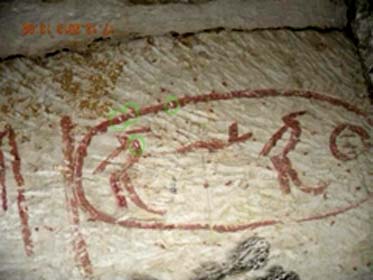
The ‘Khufu’ cartouche. ( Robert Bauval )
What we see here is completely different as there are two Quail Chick hieroglyphs to start with, representing the letter ‘W’, and the Sun Disc looks like there was an attempt to draw in the 5 parallel lines but all we have are three tiny strokes. In any case, this is not one of the two cartouches that Vyse copied from some other source into his diary. In one of his rough drawings the Sun Disc has a blob and not one line or stroke – that is what he presented as proof for the name ‘Khufu’.
It was only after I spotted this that I discovered others had noticed the fraud before me and one honest researcher, Scott Creighton had his book, ‘The Great Pyramid Hoax’ published in December 2016. From the reviews much more came to light. One member of the team that accompanied Vyse into the pyramid would have nothing to do with what he saw being done and immediately left the team. A descendant of Humphries Brewer claims that his ancestor saw paint being used – that can be the only explanation for the cartouche today in the Great Pyramid having different markings in the Sun Disc from the drawing Vyse made and claimed to have seen. Someone in more recent years has tried to make the hieroglyph look more like the one for the ‘Kh’ letters.
As the Abedjw Kings List was inscribed in the mortuary temple of Sety I circa 1279 BC, I tried to find an earlier Kings List – and there is one called ‘The Giza Writing Board’ which dates to the 5th Dynasty. This would therefore be at the most about two centuries later than the King Name in question. Once again, we have the same name as appears in the Abedjw Kings List:

Detail of ‘The Giza Writing Board.’ ( CC BY 3.0 )
These cartouches are in a slightly different order, Refw, Khafre, and Djedefre and the only obvious difference is a rectangular hieroglyph for the letter F in the top cartouche instead of the horned viper hieroglyph we see in the Abedjw List. The dot in the Sun Disc was often inserted for the God Name RE. There is no way that this could possibly be read as ‘Khufu’.
This all puts a big question over the character of Howard Vyse. What has been found is that he was corrupt and bribed his way into Parliament in 1807 and bribed the Pasha of Egypt in 1837 in order to get a permit. He was also ruthless and blasted his way into the Great Pyramid with explosives. He had to have known that the pyramid was once regarded as sacred to the Egyptians, but he had no respect for such an amazing Wonder of the World. I doubt that he would have used gunpowder to blast his way into a cathedral hunting for secret passages. He was not only seeking a fortune in his quest, but was also determined to prove his belief that all creation began only 6000 years ago as indicated by the bible.
Apart from the erosion evidence to date the Sphinx, Robert Bauval has been able to put a date on the building of the Three Giza Pyramids as their positioning would only have been exactly the same as that of the Stars in Orion’s Belt around the year 10,450 BC – this closely agrees with the time when flood waters or tropical rain water submerged the Sphinx.
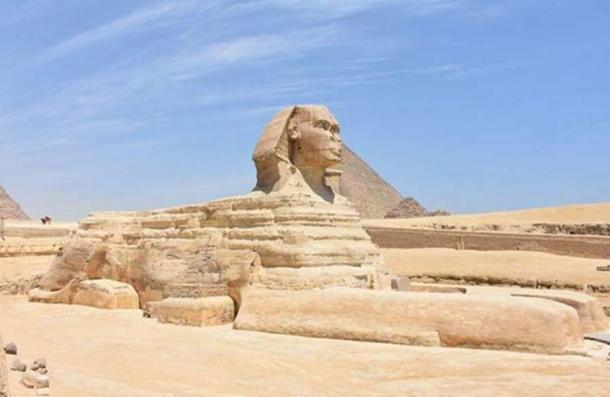
The Great Sphinx of Giza. ( CC BY-SA 3.0 )
Gerry and I have compiled a chapter in our book about the Orion constellation and its connection to other pyramids and ancient sites around the world.
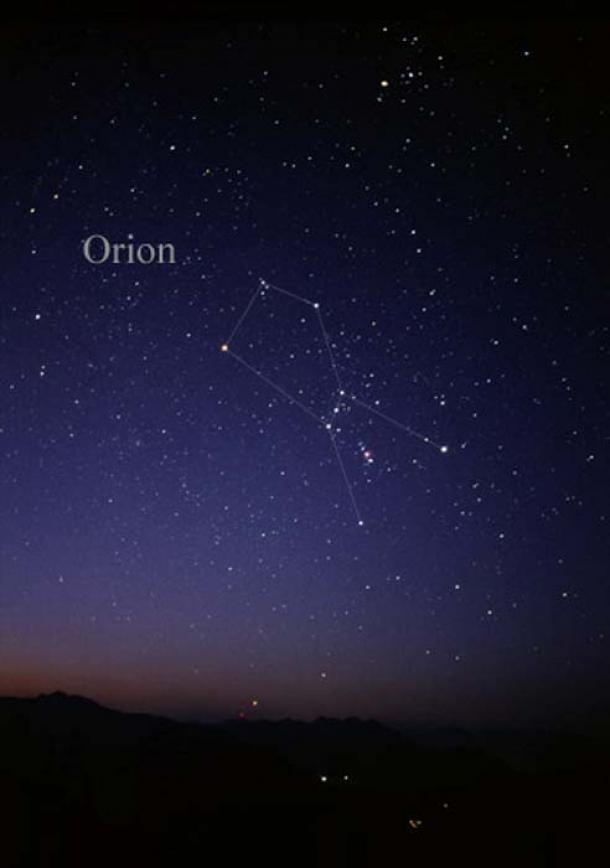
Constellation Orion as it can be seen by the nɑƙeɗ eye. ( CC BY-SA 3.0 )
Finally, I have to recommend the author Graham Hancock’s “Magician of the Gods” for this not only brings us up to date with a number of more recent discoveries such as Gobekli Tepe in Turkey, but he points out that the Sphinx would have been looking directly at the sun rising on the eastern horizon and at the constellation of Leo in the epoch of 10,500 BC. This means that we have three correlations between the Sphinx and Giza Pyramids and a very wet climate at the same point in time.
Our intended book will expand the above and much more!





